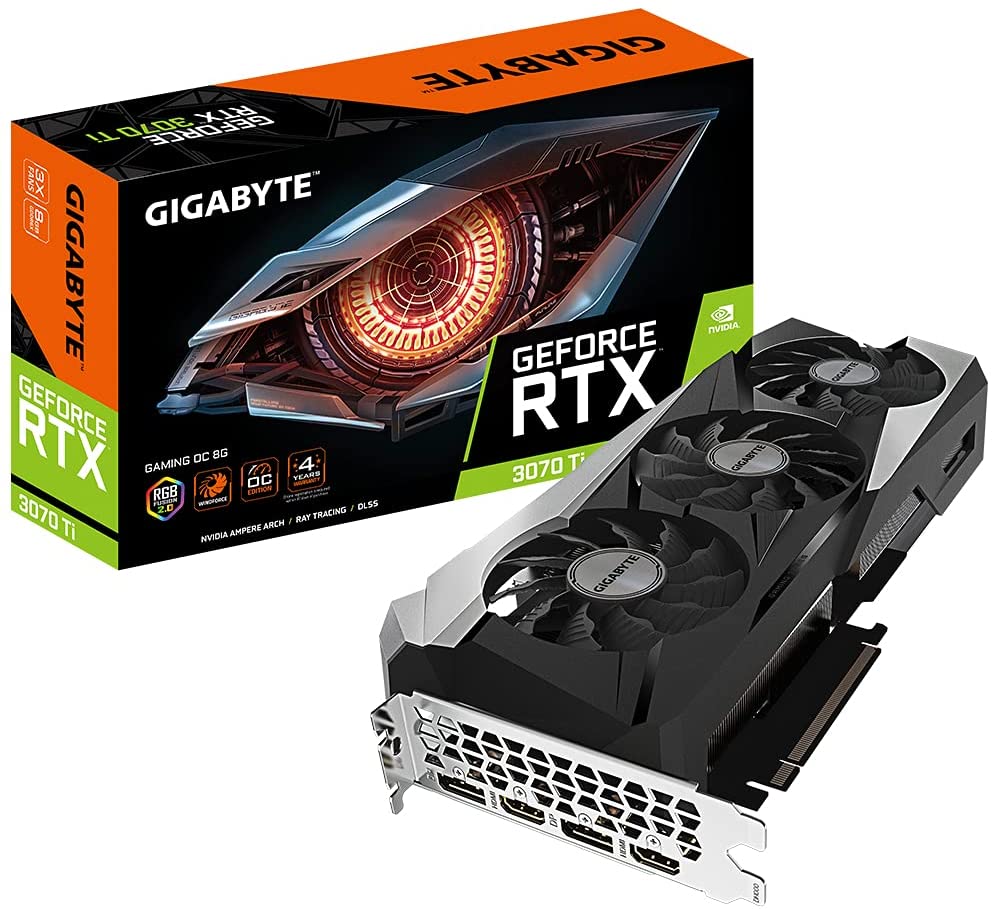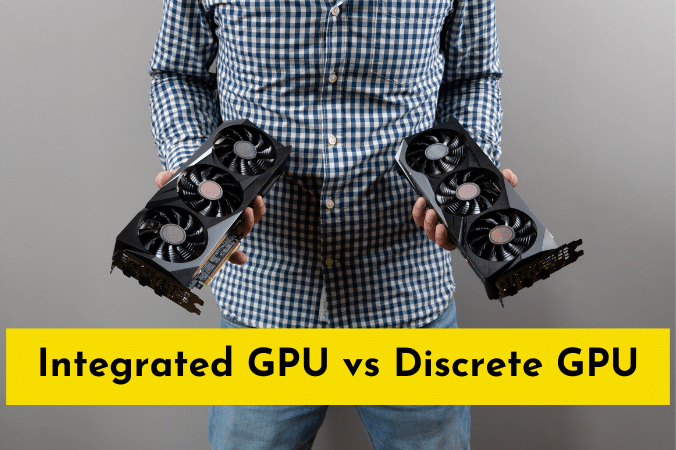A discrete graphics card is a card that you install into your computer, separate from the computer’s main processor (CPU). There is a dedicated memory for it separate from the CPU. This card gives you more power to play games and run other graphic-intensive software, and it generally doesn’t use any system memory to perform its tasks.
A discrete graphics card uses only the RAM that you’ve installed into your computer specifically for running apps or games.
Many people looking to upgrade their computer or purchase a new one don’t realize the difference between an integrated and dedicated graphics card.
Find out what a discrete graphics card is and how it can benefit your PC in the long run. In this article, I’m going to explain Discrete Graphics Card or External Graphics Card. Furthermore, I’ll tell you the difference between Discrete vs Integrated graphics card.
So, let’s dive into the topic.
What is a Discrete Graphics Card? Know More About Them
A discrete graphics card or a discrete GPU is a separate component in a computer that is responsible for rendering the graphics.
It is an add-on component that is independent of the main processor (CPU) and can provide more powerful graphics processing capabilities than the integrated graphics card that is typically included with a CPU.
A discrete GPU contains its processor and memory and is connected to the motherboard via a dedicated slot.
It allows it to run faster and process more data at once, making it ideal for applications such as gaming, video editing, and 3D modelling.
However, the power requirements for discrete video cards are much higher than those of integrated graphics cards, which means they consume much more electricity.
The energy consumption can lead to additional costs over time when using a discrete graphics card. For this reason, many users choose not to use them due to budget constraints or other concerns.
Today’s Best Offer

Related Reading
- How To Benchmark Your Graphic Card?
- How To Install A New Graphic Card?
- How To Tell If Your Graphics Card Is Dying?
Integrated GPU vs Discrete GPU: What’s the Difference?

A graphics card that is built into the computer’s motherboard is called an integrated graphics card or an onboard graphics card. It uses the computer’s RAM and processing power, rather than having its own dedicated resources.
Integrated graphics cards are less powerful than discrete graphics cards and are made for basic tasks like browsing the internet, playing simple games, and watching videos.
When it comes to the type of graphics processing you can get out of your computer, you have two main options: integrated GPU and discrete GPU.
Here’s difference table of Integrated graphics card vs discrete graphics card
|
Integrated GPU |
Discrete GPU |
|
An integrated GPU is built into the motherboard of your laptop or desktop computer. This type of graphics card uses system RAM as its dedicated memory for processing graphics. It means that the amount of RAM that you have directly affects the performance of your graphics processing. |
A discrete graphics card (or dedicated GPU) is a separate component from your laptop or desktop computer. It means that you need a dedicated display adapter if you want to experience the best performance when it comes to your type of graphics processing. |
Unlike an integrated GPU, a discrete graphics card has dedicated memory, allowing for faster and more powerful graphics processing.
Whether or not you need a dedicated graphics card depends on what you’re using your computer for.
If you’re only going to be doing basic tasks such as web browsing or word processing, then an integrated GPU will suffice.
However, if you plan on gaming, using complex software like 3D modelling or video editing, or running any kind of graphically intensive applications, then you’ll need a dedicated graphics card with its graphics processing unit (GPU).
Ultimately, if you’re looking for top-notch performance when it comes to your graphics processing needs, then you’ll need to invest in a discrete graphics card.
While integrated GPUs are sufficient for basic computing tasks, they won’t offer the same level of performance that dedicated GPUs will.
So if you’re looking for the best experience when it comes to your graphics processing needs, make sure you choose a dedicated GPU.
What Are Workloads Where Integrated Graphics are Fine?
In general, if you are performing lightweight tasks like word processing, browsing the internet, or casual gaming, then an integrated graphics card should be more than enough for your needs.
If you are doing something more intensive like video editing, 3D rendering, or other types of heavy graphics processing then you may need a dedicated graphics card.
When deciding between an integrated vs dedicated GPU for your needs, it is important to consider what type of graphics processing you need to do and how much power you require.
If you only need to perform light graphics processing tasks then an integrated GPU may be the better choice for you. However, if you require more intensive graphics processing or gaming then a dedicated graphics card may be the way to go.
Related Reading:
- GPT-4: how to use the AI chatbot that puts ChatGPT to shame
- 6 AI Shopping Assistant Tools To Help You Shop Wisely
- What Is a Co-Op Battle in Lost Ark? (Explained)
Frequently Asked Questions (FAQs)
Here are some faqs about our topic.
What Does A Discrete Graphics Card Do?
Discrete graphics cards are most often used for gaming, video editing, and other types of demanding graphical tasks. They offer increased performance and power compared to integrated GPUs and provide better performance for more intensive tasks.
Discrete video cards also typically have more specialized features, such as support for multiple displays or higher-end video output.
Where Do You Need A Discrete Graphics Card?
It depends what type of graphics you need for your computer. If you’re going to be doing any kind of serious graphical work then you’ll need a Discrete graphic accelerator. Otherwise, an integrated GPU should be enough to get the job done.
